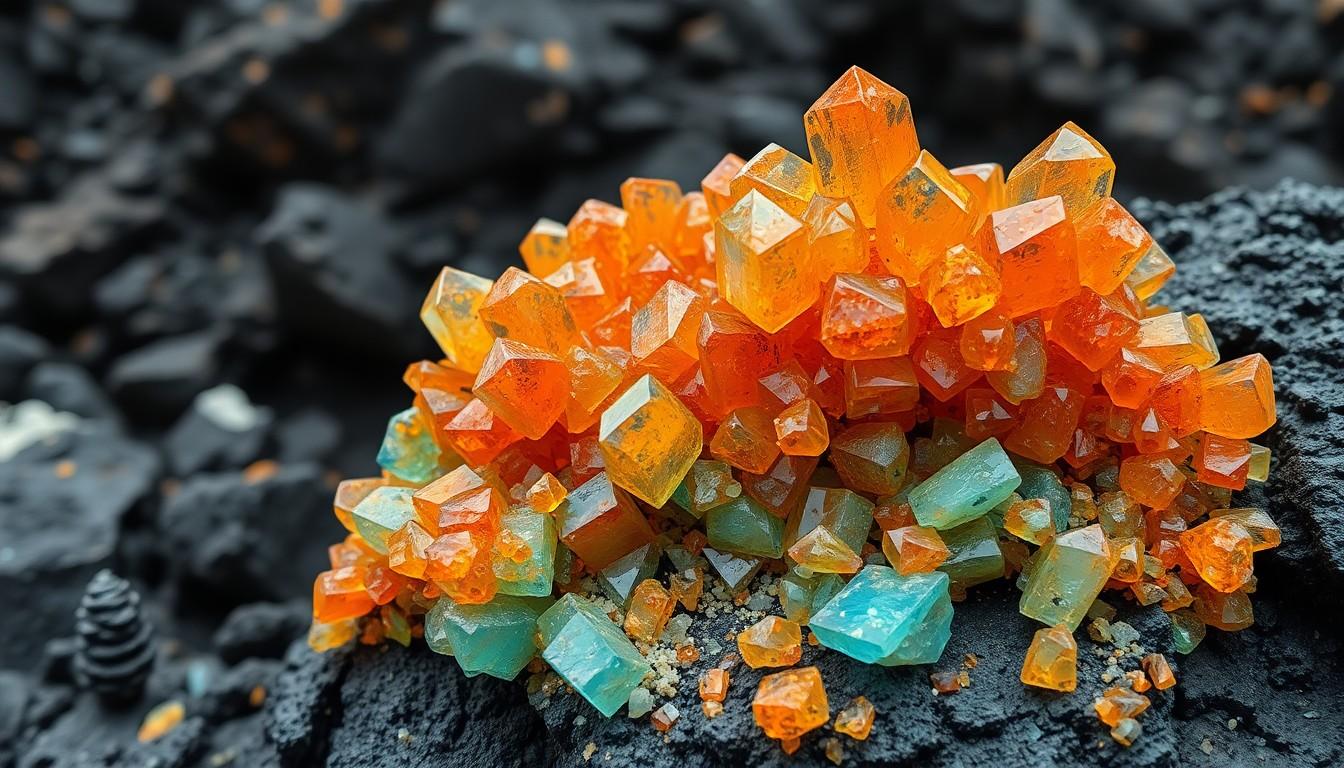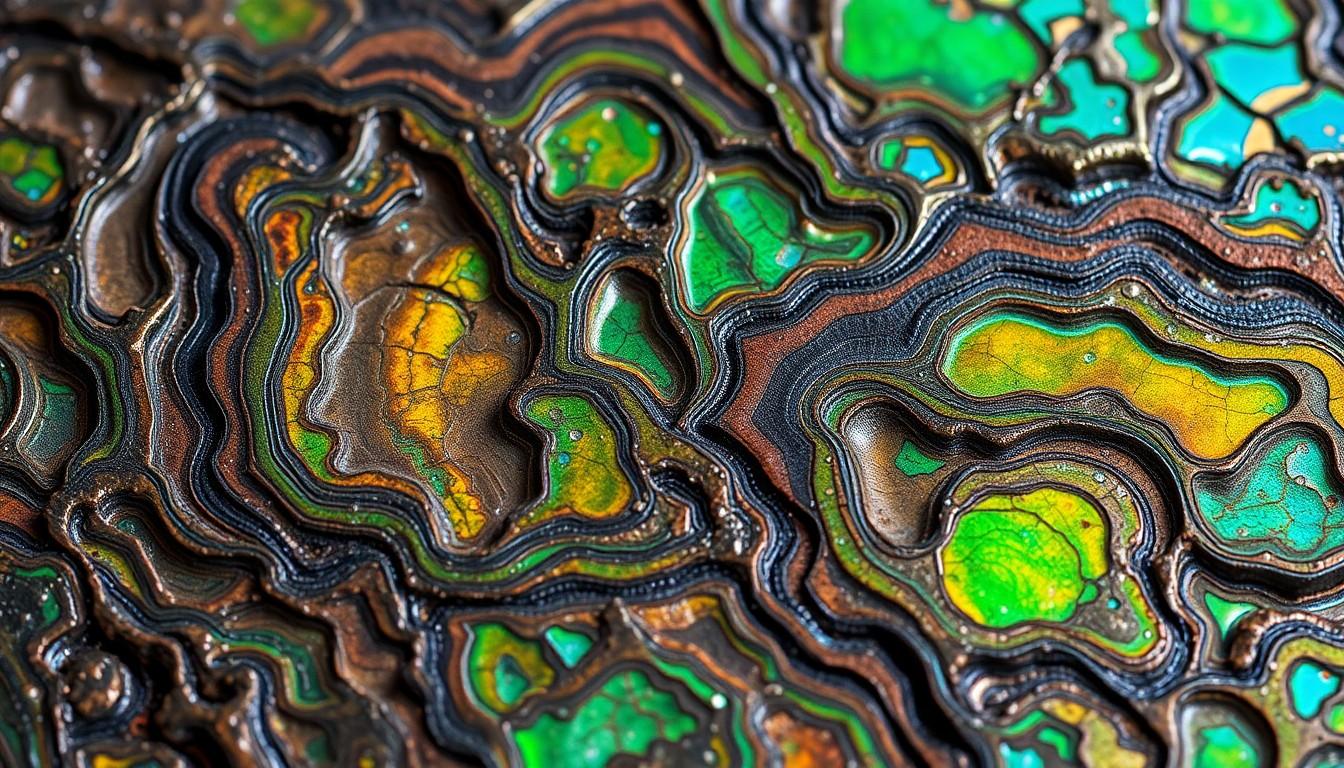In the world of textures, pohuyite stands out like a unicorn at a horse convention. This unique texture isn’t just a feast for the eyes; it’s a conversation starter, a trendsetter, and quite possibly the reason your friend’s cat is staring at the wall. With its intriguing patterns and tactile allure, pohuyite texture has captured the hearts of designers and DIY enthusiasts alike.
Overview of Pohuyite Texture
Pohuyite texture stands out due to its distinct visual and tactile qualities. This unique texture captivates designers and enthusiasts alike, creating a buzz in various creative fields.
Definition and Characteristics
Pohuyite refers to a specific texture found in various materials, characterized by an undulating surface with intricate patterns. This texture exhibits a smooth yet varied feel, inviting touch and exploration. Colors within pohuyite ranges widely, often showcasing bold contrasts or soft harmonies. Some variations display iridescent effects that shift under different lighting conditions. The ability to catch the eye and engage the senses makes pohuyite a coveted feature in design applications.
Significance in Geology
In geological terms, pohuyite adds value to the study of rock formations and mineral compositions. It often indicates specific environmental conditions during formation, serving as a marker for geological history. The presence of pohuyite can suggest unique crystallization processes, revealing insights into the Earth’s evolutionary timeline. Additionally, it serves as a resource for collectors and researchers alike, who appreciate its rarity and beauty. Understanding pohuyite offers significant contributions to both aesthetic and scientific discussions in geology.
Formation Processes

Pohuyite emerges through specific geological conditions and a unique mineral composition. Understanding these elements reveals the intricacies behind this distinctive texture.
Geological Conditions
Unique geological conditions contribute to pohuyite’s formation. These conditions often involve volcanic or hydrothermal activities that create a suitable environment for crystallization. Elevated temperatures and pressures commonly influence the growth of pohuyite. Typically, the presence of water facilitates the movement of minerals, allowing for effective transportation and deposition. Identifying particular geological formations, such as certain sedimentary or igneous rocks, enhances the appreciation of pohuyite’s context. Studying these environments helps geologists gain insight into Earth’s history and the processes shaping its surfaces.
Mineral Composition
The mineral composition of pohuyite plays a crucial role in defining its characteristics. Various minerals contribute to its vibrant colors and patterns, including feldspar, quartz, and mica. Each mineral influences the texture and visual appeal distinctively. Containing trace elements, some variations exhibit unique hues that stand out. Additionally, the presence of specific minerals can indicate the conditions under which pohuyite formed. Reactivity with certain environments affects how these minerals behave, ultimately influencing the final texture. Analyzing mineral composition enriches understanding of this enchanting texture and its place in geological studies.
Applications of Pohuyite Texture
Pohuyite texture finds relevance across various fields, showcasing its unique characteristics in practical applications.
Industrial Uses
Pohuyite texture serves multiple industrial purposes, particularly in construction and design. Architectural firms often incorporate it in decorative wall panels, utilizing its aesthetic appeal and durability. Manufacturers also produce furniture that features pohuyite textures, attracting consumers interested in distinctive designs. Additionally, its resistance to wear makes it suitable for flooring applications, where both style and functionality matter. Industries focusing on high-end goods leverage pohuyite to create premium products, enhancing overall market value.
Research Importance
Research into pohuyite texture provides significant insights for geological studies. Scholars use its formation characteristics to understand specific geological processes and historical environmental conditions. By analyzing crystal structures, researchers gain knowledge about the regions where pohuyite forms, contributing to broader geological databases. Geologists identify pohuyite as a marker for volcanic activity, aiding in the assessment of mineral deposits. This mineral’s study reveals the interplay of natural forces, enriching the understanding of earth’s dynamic systems.
Comparison with Other Textures
In exploring pohuyite texture, comparisons with other textures reveal both commonalities and distinctions. Analyzing these aspects enhances the understanding of pohuyite’s uniqueness.
Similarities
Pohuyite shares characteristics with several textured materials in design and geology. Both pohuyite and marble showcase intricate patterns that attract attention. Designers often utilize unique textures to create a tactile experience, a trait evident in pohuyite as well. Many textures, including granite, exhibit varied colors and visual depth, similar to pohuyite’s vibrant hues. The appeal of tactile surfaces resonates with consumers seeking distinct designs, making pohuyite comparable to other artistic materials.
Differences
Differences between pohuyite and other textures highlight its uniqueness. Unlike smoother materials such as glass or polished stone, pohuyite features an undulating surface that invites touch and exploration. Its iridescent effects set pohuyite apart from standard textures, offering a dynamic visual experience. While traditional textures often lack the geological significance of pohuyite, its formation suggests specific environmental conditions not present in other materials. Collectors often prize pohuyite for its rarity, distinguishing it from more commonly available textures and enhancing its allure.
Conclusion
Pohuyite texture represents a fascinating intersection of beauty and science. Its unique characteristics not only captivate designers and collectors but also provide valuable insights into geological processes. As it continues to gain popularity in various applications, pohuyite’s role in enhancing aesthetic appeal and functionality cannot be overstated. This remarkable texture invites exploration and appreciation, making it a standout choice in both artistic and scientific realms. With its rich history and striking appearance, pohuyite is sure to remain a topic of interest for years to come.

